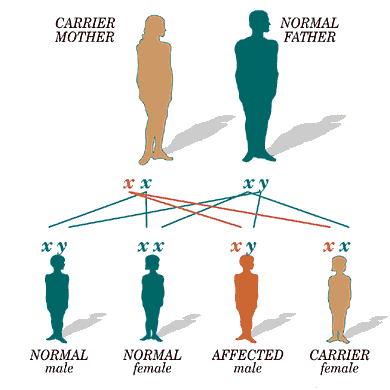I had always thought that dimples means the person who has it resembles his/her mother or father. But my sister told me otherwise. She had explained that dimples is genetics and that it has skipped me, so it goes to the next generation - my children. And I'm still jealous of my brother and sister having two dimples each. And I have none, I kept asking mom if I was picked up from the rubbish dump, since I didn't have any dimples.
So my sister explained that I have the genes in me, so it goes to my child - skipped a generation. And she further explained "I have, brother have, Ah yong(our cousin) and Ah Ben(our cousin) also have. Then Ah Ping(our cousin) don't have."
I tried getting answers from the web and only found this :-
Extracted from : http://www.uni.edu/walsh/genetics.html
Mendelian Genetics
Mendel studied dichotomous traits & how they are passed on to offspring
2 possible "alleles" for each trait
The combination one has (1 from mom, 1 from dad)
is called your "genotype"
2 matching alleles = "homozygous"
2 different alleles = "heterozygous"
In heterozygous individuals, the allele that is "expressed" (seen in individual’s appearance) is the "dominant" allele
The traits that are expressed make up your "phenotype"
The allele that is not expressed is the "recessive" allele
There are more than 2 alleles for some traits
Most traits, in fact, are affected by more than 1 gene
Sex-Linked Traits
In the case of genes located on the X chromosome, females would have the usual 2 alleles for each gene but males only have 1 X chromosome and thus 1 allele (the Y chromosome contains only a small number of genes related to gender)

----------------------------------------------------------------------------
Extracted from :- http://www.science.edu.sg/ssc/detailed.jsp?artid=4862&type=6&root=4&parent=4&cat=40
Question No. 19243 :
I understand that traits such dimples and unattached earlobes are considered dominant traits. Is it possible for a child to have such traits when both parents do not exhibit such traits? Is it possible for such traits to "skip a generation"?
Visible human characteristics or traits are controlled by groups of information called genes that are composed of nucleotides. Each gene codes for a particular protein. (What actually determine our traits are proteins, not DNA.) Many genes are combined to form a large piece of DNA called a chromosome. Each normal human being has 46 chromosomes, or 23 pairs (diploid) in each body cell. In forming the gametes (egg or sperm), one of each chromosome pair will be given, so these cells have only 23 single chromosomes (haploid). In this way, the father contributes half of the genetic information (genotype) for the child; the mother will contribute the other half.
The position of each and every gene is in the exact corresponding location on the same chromosome of every organism within a particular species. Even closely related people look slightly different from each other because of alleles. Alleles are different forms of a gene that controls a trait. Some alleles are dominant and some are recessive. Recessive alleles are only expressed if the homozygous recessive genotype is present. Genotype refers to the actual DNA sequence, or actual alleles present, whereas phenotype is the visible expression of the genotype. An individual with two of the same allele for a given gene is homozygous, and one with two different alleles for the same gene are heterozygous.
Both detached earlobes and dimples are considered dominant traits.
Human Trait Dominant Allele Recessive Allele
Dimples Have dimples No dimples
Earlobes Detached Attached
Freckles Freckles present No freckles
Notes:
* Dimples are natural dents in the face to the right or left of the mouth. If a person has only one dimple, they should be counted as having dimples.
* A person with attached earlobes will have the lowest point of the earlobe attached to the face. A person with unattached earlobes will not have the lowest point of the earlobe attached to the face. In fact, you may be able to put part of your fingertip between the face and the unattached bottom portion
of the ear lobe.
* Tongue-rolling is not a simple inherited trait. The genetics behind tongue rolling are not very secure.
**************************************************************************************
Does that answer my doubts? Too deep for a pea-sized brain me to understand. But even so, it's what my sister claims, I wonder then how is it my two daughters take after my hairy-ness (which is akin to being horny - haha!), why didn't it skip them. Now hubby may have to consider sending the two of them for IPL, while the poor mother have to resort to shaving. See! The hubby treats his daughters better than me!
Now, I'm so jealous of Athena's long and thick eyelashes. And Aricia's dimple.




No comments:
Post a Comment